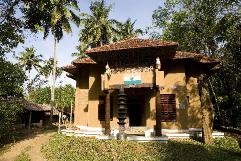 | ||||
THE CHITTAGONG HILL TRACTS: REFUGE AND REFUGEES | ||||
CHT Under Pakistani Rule: Monoculture and Job Discrimination After Partition in 1947, when the Pakistani government took over the CHT, intense exploitation of natural resources-including commercial logging and monoculture teak. plantations began to transform the CHT. A paper mill was established in 1953 with $13 million in aid, including $4 million from the World Bank. The mill created 10,000 jobs, but only 200 went to Jummas, and those were mostly menial positions. Pellamoni Chakma, a contract laborer, told me: "They [the Bengalis] take the powerful jobs, and the best parts of our land... They are not interested in helping us progress. It is better far them if we remain impoverished and desperate for work. They pay us a low wage because they know we can't turn down the offer of any wage. My salary is lower than a Bengali doing the same work, but if I didn't have that job, what situation would my family be in? If we say anything about salaries being low, we put ourselves at risk of losing our jobs."
Lack of Affordable Medical Care The village of Tangchangyapara, inhabited by Tangchangyas-one of the tribal groups in CHT, now numbering only 50,000 -is three hours by gas-powered boat from the nearest town. This village, like others in remote areas, has no running water, sanitation system, health facility, electricity, or phones-not even a local shop and certainly no' schools. Upon arrival, I was approached by a 12-year-old girl. She hadn't met anyone with white skin before. "Why are you a funny color?" she asked, "Is it because you are sick?" I told her I came from London, but she hadn't ever heard of England or Europe. I asked her if she had heard of Dhaka, the capital of her country. She hadn't. She said she hadn't been to' school so she didn't know about such things. I asked her if she knew what Coca-Cola was. She nodded with a smile. She said she lived with her parents and a little brother who was sick with malaria. She also had malaria. I asked if her brother had seen a doctor but she t01d me no', her mother was caring for him. What would happen if her brother-or anyone in a serious medical situation-needed medical attention's? An elder of the village told me: "If any of us full sick we have to' seek assistance from a doctor in Rangamati, a day's journey away.... If it is critical, we get a doctor to' came here to our village, but it is very expensive-around 900 taka ($15). We have to pay him and hire the boat to bring him here and take him back. It is difficult because the average family income is 100 taka ($1.65) per day. There is no way to earn Iots of money here.... Sometimes, there is no' time to' get a doctor.... My eldest san died last year, from diarrhea and a sick stomach."
The Kaptai Dam: Tourist Attraction or Disaster? Tangchangyapara, like most of the villages in the Rangamati District, is surrounded by water from the Kaptai Lake. In the 1960s, the Pakistani government received aid (particularly from the U.S.) to help industrialize East Pakistan. When the Kaptai Dam was built, land and homes were submerged by water. Kaptai Lake is now promoted as one of the top tourist attractions in Bangladesh. The state tourist magazine proudly announces that "on a moonlit night, the submerged Royal Palace can be seen." But the disappearance of the treasured Chakma Palace was a huge psychological blow to the community. During my first visit to the Hill Tracts, I was admiring the beauty of the scenery while crossing the lake at sunset on a boat trip with some Chakma friends. One told me, "This lake that you find so beautiful was made from the tears of our people. Below this water lie our villages, our homes, our agricultural land. Even our Chakma Palace is below the water. We lost everything." Pushbamala Chakma, an 80-year-old woman, described what happened: "The water slowly covered our land. First" it covered our agricultural land where we used to grow rice-it flooded the fields, and then more and more water came. "What could we do? We couldn't stop the water." The people from Tangchangyapara cleared new areas of the forest to make homes and villages. None of the villagers received compensation for the land they had lost. They survived by working as daily laborers and collecting wood and vegetables from the forest to sell in markets. On a good day they could earn about 70 taka (roughly $1.17). <...Previous Page Next Page...>
|  | |||||
| ||||||